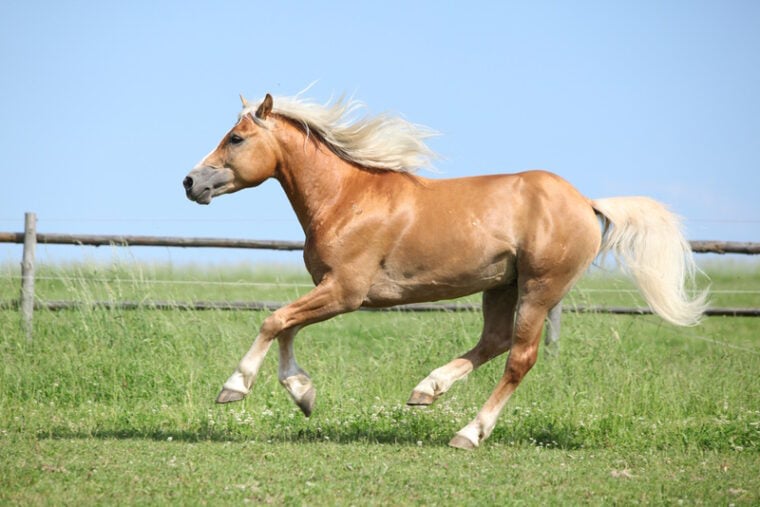
Horses have been incredibly valuable working animals and royal companions for humans for thousands of years. Domesticated for work, sustenance, and company, horses have lived alongside humans through almost every period of civilization.
The first wild horses were documented as domesticated around 6,000 years ago in Europe, and since then, many distinct breeds have arisen. Some breeds of horses are almost as old as the first to be domesticated, and many others have been lost to time. In this article, we look at 12 of the oldest horse breeds.
The 12 Oldest Horse Breeds in the World
1. Icelandic Horse

| Origin | Iceland |
| Lifespan | 30 years |
| Height | 52–56 inches |
| Weight | 705–904 pounds |
| Colors | Chestnut, dun, bay, black, brown, palomino, roan, pinto |
The Icelandic horse is one of the oldest breeds in the world, with their ancestors settling with the Norse people between 860 and 935 A.D. The Vikings came and went while these horses were helping their owners with the fields and travel, so this breed truly is one of the oldest in the world!
They’re still popular today due to their rich lineage, resistance to cold, and importance to the Icelandic people. They’re small compared to some other horses on this list, but they’re fast and mighty and often used in competitions.
2. Caspian Horse
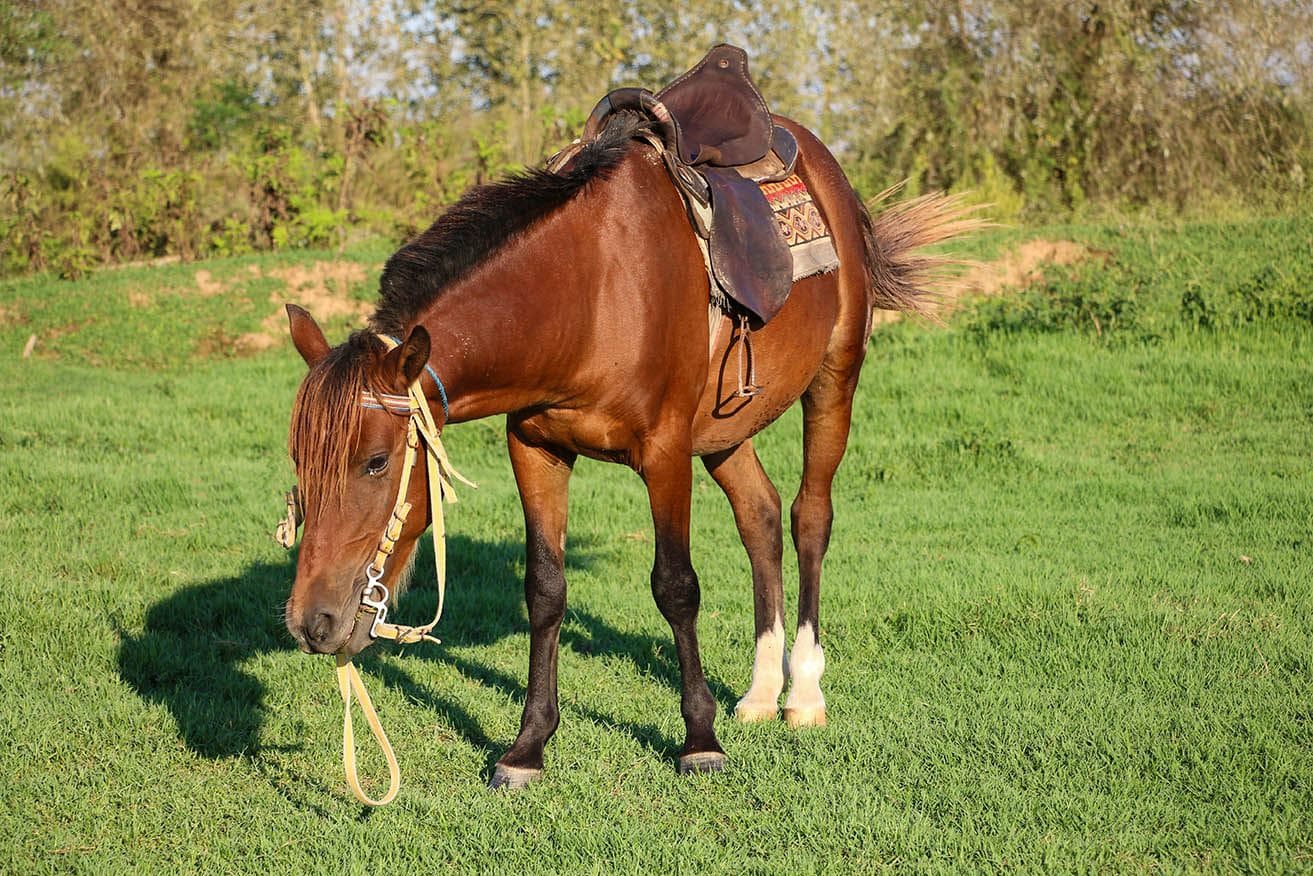
| Origin | Iran |
| Lifespan | 25 years |
| Height | 40–48 inches |
| Weight | 595 pounds |
| Colors | All colors except skewbald and piebald |
The Capsian horse is a sight to behold. A beautiful shining coat and a proud, regal expression make this Iranian breed a beloved one, and they are truly ancient. Caspians resided in Ancient Persia in 3000 B.C. (at least) and are believed to be the progenitors to most horses in their class today.
These horses were considered extinct until 1965, and they only resided in a small area to the north of Iran until Louise Firouz rediscovered them and worked hard to re-establish the breed. Some were exported to the U.K., which helped boost the breed’s numbers, but sadly, they’re still endangered.
3. Arabian Horse

| Origin | Arabian Peninsula |
| Lifespan | 25–30 years |
| Height | 57–61 inches |
| Weight | 904–1,102 pounds |
| Colors | Bay, grey, chestnut, black, roan |
These elegant but hardy horses are ancient, originating in the sands of the Arabian Peninsula around 3000 B.C. Bedouin tribes lived alongside the horses and relied on them for transportation and war, and they were incredibly valuable to the tribes that lived with them.
Arabian horses are smaller than some others on this list and have distinctive fine-boned faces with large, expressive eyes. Arabians are excellent at horse sports because of the breed’s natural hardiness and endurance. They’re also friendly horses that many famous individuals, including Napoleon Bonaparte and George Washington, have utilized!
4. Akhal-Teke Horse
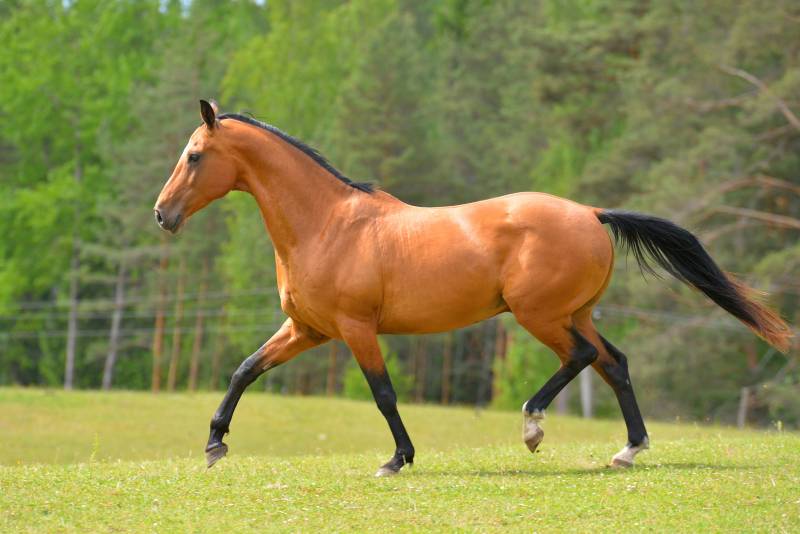
| Origin | Turkmenistan |
| Lifespan | 18–20 years |
| Height | 62 inches |
| Weight | 900–1,000 pounds |
| Colors | Bay, dun, black, chestnut, gray, light bay, cream, palomino |
The stunningly beautiful Akhal-Teke is the national horse of Turkmenistan (their country of origin) and is reverently referred to as “the golden horse.” These horses are bred for endurance and their metallic, shimmering coats.
This old breed is incredibly rare to find outside of their native area, and the slender elegance of the horse, coupled with their alluring coloring, makes them one of the most interesting breeds in the world. The Akhal-Teke is believed to descend from the now-extinct Turkmen horse, which was used as a war horse in Asia, and the breed was first referenced around 3,000 years ago.
5. Eriksay Pony
| Origin | Scotland |
| Lifespan | 25–30 years |
| Height | 48–54 inches |
| Weight | 715–880 pounds |
| Colors | Grey, black, grey |
The Eriksay pony originated in Scotland. This critically endangered breed was first developed on Eriksay Island in the Outer Hebrides by Norse and Celtic settlers, making them an ancient breed. The special horses have waterproof, dense coats perfectly suited to work in the cold, wet Scottish climate.
The Eriksay was used as a mount for children due to their mild temperament and smaller stature, but they still make great workhorses for light draught and as carriers of loads.
6. Norwegian Fjord Horse
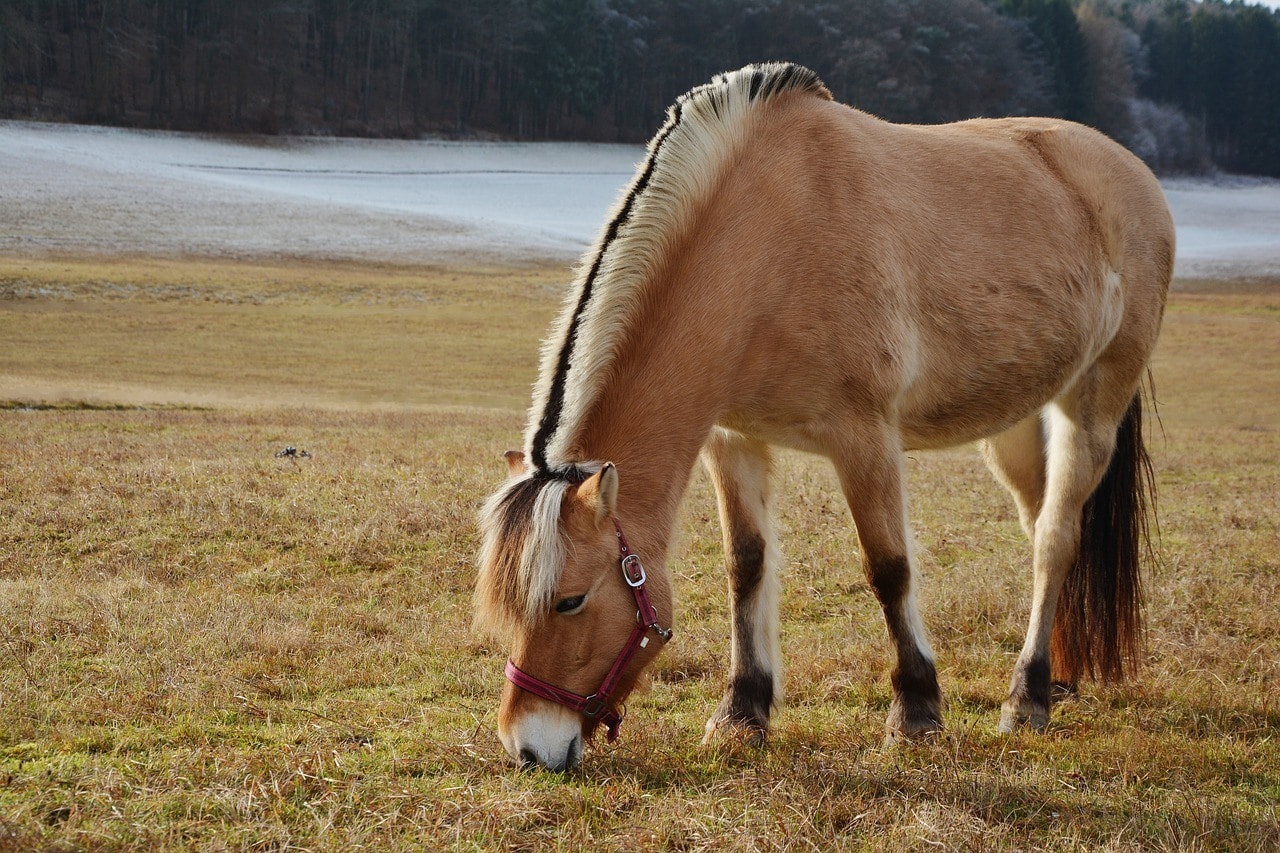
| Origin | Fjord, Norway |
| Lifespan | 28–30 years |
| Height | 52–65 inches |
| Weight | 1,201–1,400 pounds |
| Colors | Dun |
The Fjord horse is small but mighty. These hard workers originated more than 4,000 years ago, when their ancestors migrated to Norway. The Vikings used the breed as hardy war mounts, and there is evidence that they were being selectively bred 2,000 years ago!
The strength and sturdiness of the Fjord horse make them a popular breed to use for work to this day, and the purebred nature of the species has meant the dense coat characteristic of the Fjord horse has been retained. This makes the breed more than capable of braving harsh Norwegian winters!
7. Mongolian Horse

| Origin | Mongolia |
| Lifespan | 25–30 years |
| Height | 48–60 inches |
| Weight | 657–880 pounds |
| Colors | Bay, black, grey, white, dun |
Mongolian horses are the national horses of Mongolia but are so much more than that. These semi-feral horses are practically unchanged from those that served Ghengis Khan, and around 3 million individuals are cared for in traditional Mongol fashion.
They feed themselves and are outdoors year-round, so their hardiness is useful when dealing with extremes in temperature. Mongolian horses are used for various purposes in their native culture, including meat, milk, transport, and racing.
8. Asturcon Pony

| Origin | Spain |
| Lifespan | 25–30 years |
| Height | 44–48 inches |
| Weight | 550–606 pounds |
| Colors | Black, bay |
The Asturcon pony is native to Spain and has been around since the Roman era (625 B.C.–476 A.D.). These sturdy horses are small and compact, with only two colors ever seen in the breed (black and bay). Asturcons are known in the horse-fancying world for their characteristic ambling gait, alternating their legs on one side as they move.
This gait was known to Pliny the Elder (a Roman philosopher), who described the Asturcon’s movement in his writings. The ponies are now endangered, and efforts are being made to sustain the population.
9. Exmoor Pony
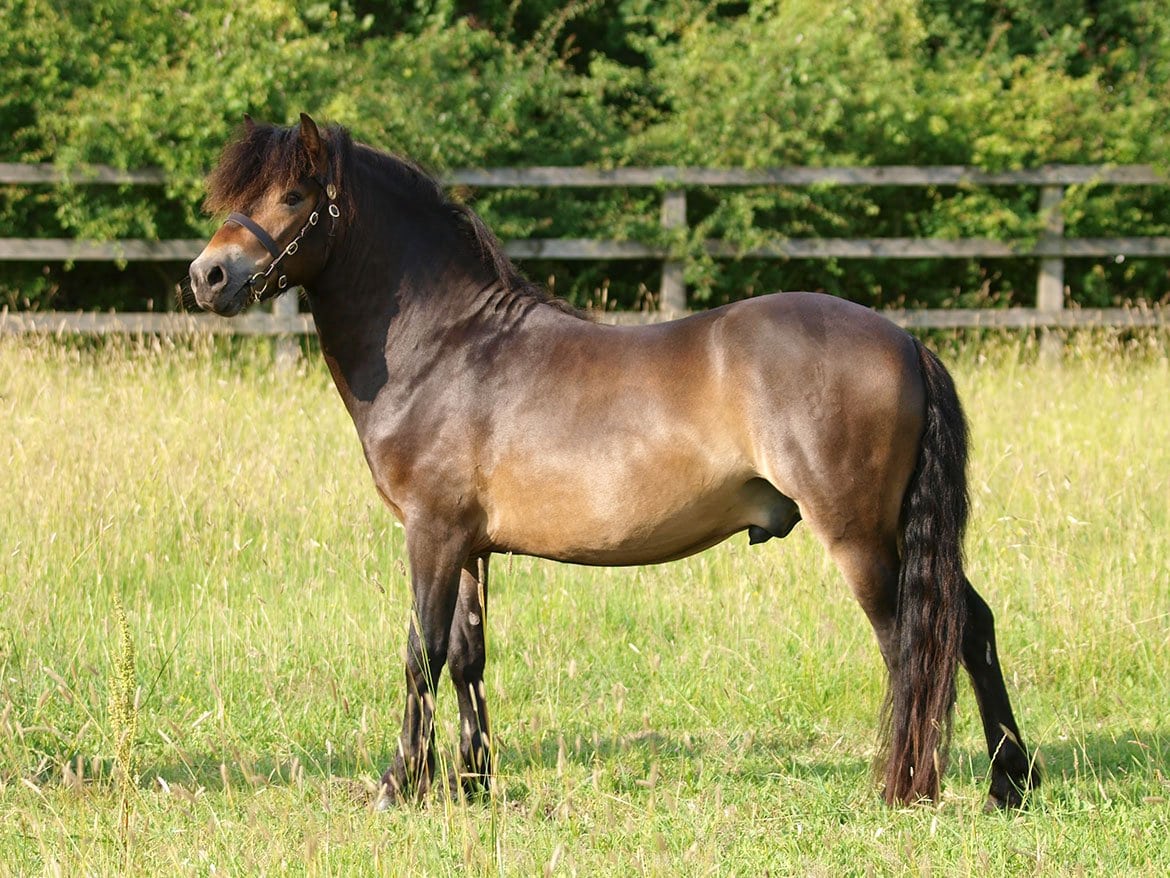
| Origin | England |
| Lifespan | 25–30 years |
| Height | 49–48 inches |
| Weight | 595–805 pounds |
| Colors | Bay, dun, brown |
Exmoor ponies are an ancient breed hailing from the United Kingdom. Exmoor ponies originate from the Exmoor area of Devon, and their shaggy coats enable them to weather the soggy and rainy conditions found in the area.
There are still wild groups of Exmoor ponies in southwest England! Despite almost becoming extinct in the Second World War, Exmoor ponies have been around since at least 1086, when they were recorded in the British Domesday book. Exmoor ponies are critically endangered today, with only 95 registered in the U.K. in 2021.
10. Garrano Pony
| Origin | Portugal |
| Lifespan | 25–30 years |
| Height | 61–64 inches |
| Weight | 639 pounds |
| Colors | Brown, dark chestnut, bay |
The Garrano pony is one of the oldest breeds on our list. They’re so old, they’ve been depicted strikingly in Iberian paleolithic cave paintings! These elegant horses still roam their native area of Portugal, living in wild herds on mountainsides.
The Garrano pony is agile, quick, and light enough to traverse mountainous terrain easily. Despite their ancient history, the ponies are still used for work and riding. This beautiful breed can be seen giving rides to tourist groups traversing the region’s mountainous areas.
11. Cleveland Bay Horse
| Origin | England |
| Lifespan | 25–30 |
| Height | 64 inches |
| Weight | 1,201–1,499 pounds |
| Colors | Bay |
The Cleveland Bay horse is the oldest breed originating in England. They hail from the Yorkshire area and can be traced back to the Middle Ages, when bay horses similar to the Cleveland Bay were used for pack and pillion work. They were commonly used to pull coaches and carriages through the ages due to their strength and easy temperament.
Fortunately, despite a spotty history (with the breed even being threatened with extinction at one point), the Cleveland Bay is now commonly found throughout the U.S. and the U.K. The Cleveland Bays are used for everything in the horse enthusiast world, from racing to dressage.
12. Prezwalski’s Horse
| Origin | Europe and Asia |
| Lifespan | Up to 36 years |
| Height | 60 inches |
| Weight | 550–800 pounds |
| Colors | Golden, white, black and white stripes |
This horse is not domesticated but is the oldest on this list by far. Prezwalski’s horses are around 500,000 years old, and the last survivors of the endangered species live in completely wild groups in Mongolia.
These stocky horses can breed with domesticated horses to produce fertile young (which is highly unusual), and the young all share the same dun coloring with the characteristic black-and-white striped mane and knees. While it was thought for a long time that Prezwalski’s horses were the ancestors of all modern domesticated horses, they’re more like cousins!
Conclusion
There are many breeds of horses available (400 to be exact) for hobbyists, and all have interesting origins. However, the horses on this list are ancient and have been around for hundreds, if not thousands, of years. They are the progenitors of a few modern horse breeds (such as the Arabian and Caspian horses), and each has their own unique traits, heritage, and history.
- You Might Also Be Interested In: Chestnut Horse Facts
Featured Image Credit: Zuzule, Shutterstock







